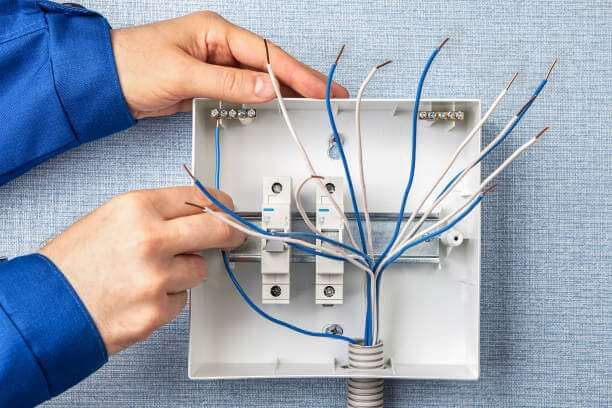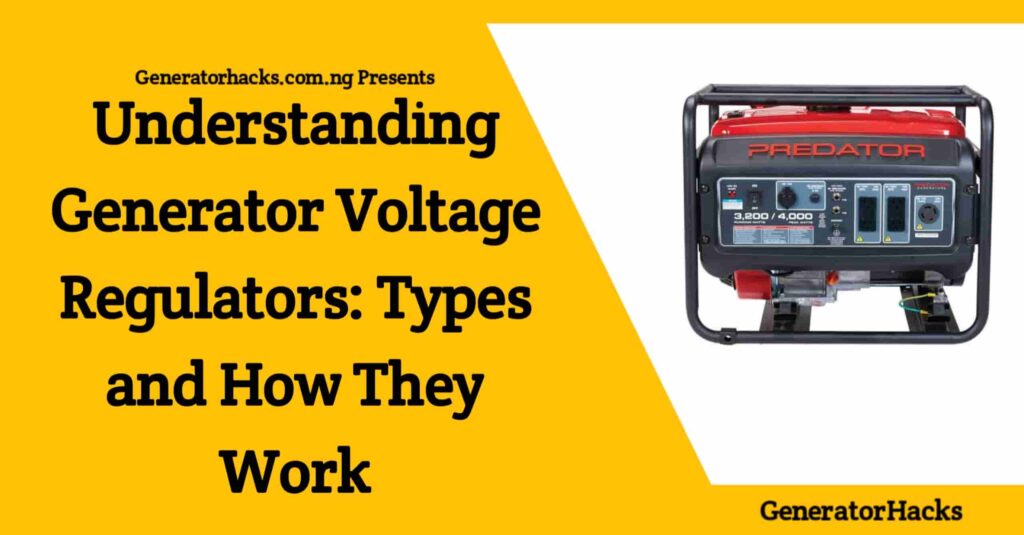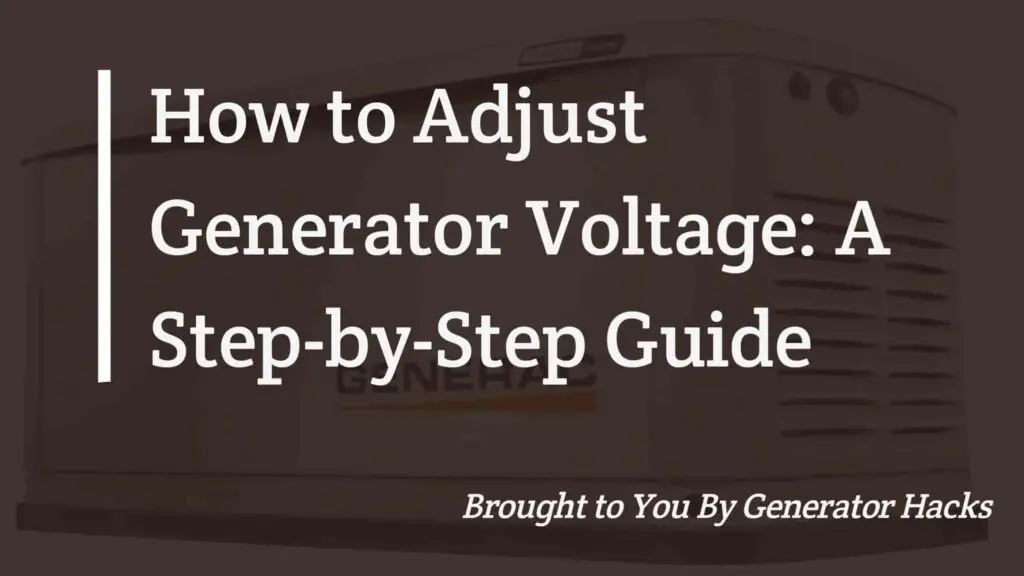As an Amazon Associate, we earn from qualifying purchases. This does not affect the price you pay or the quality of the products you buy. For more information, please read the full affiliate disclosure here.
Are you experiencing issues with your generator running under voltage? I understand how frustrating it can be when your generator fails to perform as expected.
But don’t worry! I’m here to help you overcome the under voltage issues with your generator.
When a generator runs under voltage, it typically occurs when the voltage level supplied by the generator falls below the required threshold.
It happens for various reasons, such as the generator’s running under speed, a voltage regulator, incorrect wiring from the alternator, or an excessive load on the generator.
Consequently, when your generator runs under voltage, you may notice symptoms like flickering lights or insufficient power supply to your appliances.
Hence, in this article, I will provide you with a troubleshooting guide to fix the under voltage fault in your generator.
However, if you find the task daunting, it’s advisable to seek professional assistance, as it’s the best option.
Troubleshooting a Generator Running Under Voltage Fault
Step 1: Check Your Generator’s Speed
The speed of your generator plays one of the most important roles in ensuring a stable voltage. If your generator is running slower than the estimated speed, it can result in under voltage.
According to the National Research Council (NRC), generator voltage output is determined by the speed of the generator.
That is to say, the speed at which the conductor moves through the fixed magnetic field and the strength of the magnetic field itself determine the voltage output.
This speed of the generator is directly related to the rotational speed (RPM) of the generator or engine.
So, as the engine’s speed increases, the voltage produced also increases.
And as far as I’m concerned, if your generator is running slowly even without any load connected to it and is producing under voltage, you should check its speed. Increase the speed slightly until it can provide a stable voltage output.
Step 2: Check the Voltage Regulator
Voltage regulators are also one of the components in generator alternators that maintain stable voltage output.
They are responsible for monitoring and regulating the voltage level of your generator, preventing it from dropping too low or rising too high while running.
If the voltage regulator is faulty, it may result in an unstable voltage output that can damage your appliances.
Voltage regulators come in different types, such as capacitors or automatic voltage regulators (AVRs). You must identify which type your generator uses.
If an AVR is present, you can test it to determine if it’s the cause of the under voltage. If it’s the cause of your generator running under voltage output, there’s a need for you to replace it. The same applies if your generator uses a capacitor.
Note: Voltage regulators come in different types, sizes, and capacities. When purchasing a replacement voltage regulator, ensure it matches your generator’s requirements.
Also Read:- How to Bypass Generator AVR: Complete Guide
Step 3: Check Your Connections
If you have addressed the generator’s speed and voltage regulator but are still experiencing voltage faults, it’s necessary to inspect the connections at the alternator.
Faulty connections can lead to voltage issues in your generator. Begin by examining the power cord to ensure it’s free from damage and securely connected to both the generator and the power source.
Inspect the wiring for any loose or frayed wires at the alternator and repair or replace them if necessary.
Additionally, pay attention to the grounding wire, as faulty grounding wires can also contribute to voltage problems.
Step 4: Load Management
Sometimes, a generator running under voltage can have an overload issue. Your generator has a limited capacity, and exceeding it can result in voltage drops.
To prevent this, practice load management. Identify the essential appliances and prioritize their operation.
Consider turning off or unplugging non-essential devices to reduce the strain on your generator. Remember, maintaining a balanced load distribution is key to avoiding overloading any single circuit.
Also Read:- FAQs: What Happens to Generator When Load Increases?
Generator Running Under Voltage Prevention Measures
Your generator might have exhibited warning signs before developing this fault, which you may have overlooked assuming it was working fine.
That’s why manufacturers always stress the importance of regular generator checks and maintenance.
I recommend scheduling an expert’s visit every 200 hours of generator operation for a thorough maintenance check.
For routine maintenance, clean the air filters, inspect the spark plugs, and change the oil regularly. If you want to go the extra mile, check the fuel supply for impurities and ensure it’s free from contaminants.
Regular maintenance not only keeps your generator in optimal condition but also helps identify potential issues before they escalate into major problems.
Consulting with Experts
Sometimes, the issues your generator faces may be unique, requiring expert advice.
Seeking consultation with Generator Hack’s experts can be immensely helpful.
At Generator Hacks, we have a team of professionals, including electricians, generator technicians, and manufacturers, ready to listen to your concerns and provide the solutions you need.
You can leave a comment or decide to contact us directly.
With our knowledge and experience at Generator Hacks, we can help you with all you need to ensure reliable and efficient generator voltage output.








